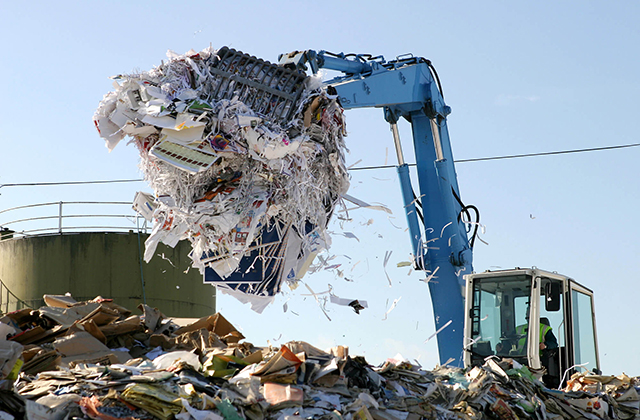It used to be that primer grey was the only time a ‘flat’ finish was appropriate on an automobile, and it was only acceptable for vintage cars of a certain style. Your pal’s 67’ Nova with a blower on it, for example — prime material for a sinister, unfinished but goes-like-hell sort of look. New car paint protection process keeps your new car looking pristine and maximises its resale value.
These days, that philosophy has gone out the window. Not only are cool cars available in matte finishes, but manufacturers are actually offering these as premium options, the way you might expect to see a pearlescent or metallic paint job on the options list. Marques like BMW and Mercedes are creating special-edition paint colors with names like “Frozen White,” and they’re charging extra — even though you can have a matte finish on your Hyundai Veloster too.
But what makes paint come out this way anyhow, and can you do it on your car?
Going to the Matte Paint
You can, and it’s not all that terribly difficult. Like any paint job, a matte finish consists of multiple layers of paint (in different colors or the same) laid down over one another and then topped with a clear coat. Yes, matte does use a clear coat, it’s just a special one made for use with this style of paint.
The first thing you need to do before you can transform your vehicle into a frosted work of art is prepare it. This means sanding old paint off, masking off the window seals and wheels and laying down your primer. Take it seriously, though. A mistake in your prep work can ruin your entire paint job.
Types of Matte Paint
Much like any aftermarket paint job, you have options when applying your new finish. Most automotive paint manufacturers call their matte products a ‘flat’ finish if they are a true matte paint. You can also go for something in-between like satin, which offers some luster without the syrupy look of high-gloss or metallic paint. The real secret to keeping your finish from reflecting light is the clear coat.
Even if you choose to use a somewhat shiny mid-coat, applying a matte clear coat will knock down the vibrancy to achieve the desired effect. There are even special matte-black specific clear coats to darken the hue of the colors in your mid-coat. If there’s no paint on the car at all, you can use a technique called hot blackening which will give it a black matte finish.
Use a test swatch to lay down your mid-coat in the color of your choice and then apply your clear coat and try different options like matte, flat and satin. A Sun Gun is a helpful tool that will give you a feel for how the paint will actually appear when it’s finished.
Semi-Gloss
Most matte finish paint you see falls into this category. As opposed to the style of paint more commonly used on automobiles, typically a two or three-stage gloss finish, semi-gloss reflects less light. The flat black, hot-rod look generally uses semi-gloss paint as opposed to shinier satin-finish.
Keep in mind that with this or any other type of matte paint, you should avoid using traditional solid wax. Doing so will damage the finish, so use a spray wax or matte-specific product instead.
Single-Stage vs. Dual-Stage or Multi-Stage
Recently, some people interested in applying a matte finish on a budget have taken to applying single-stage matte paint. There’s nothing inherently wrong with this — the paint will still seal the exterior of the car and protect it from elements to some degree, but there’s nothing there to protect the paint the way a clear coat does.
Two-stage paint adds a clear coat, which keeps interference from dust and minor rubs from damaging your paint. It also allows you to polish the paint. A single-stage paint job will be hard to maintain because every time you polish it, you’ll be removing a small amount of the only layer of paint on the car.
Multi-stage paint jobs aren’t typically necessary to achieve a matte finish, though some manufacturers use them to achieve certain effects or add richness to certain colors. You’ve more than likely seen a multi-stage finish on a car with “candy” paint that gives the illusion of extreme depth through the use of several colors and clear coats.
Satin
Satin paint is a variation on matte finish that adds back a little luster. It reflects some light and often requires the application of a special type of finishing clear coat.
If you’re interested in doing a subtle paint job but want it to be different from the typical matte options, satin could be the ticket. Keep in mind, we’re not suggesting you pick up a can of satin black rattle-can spray paint. There are high-quality satin black products that will deliver a finish on par with what manufacturers are offering — if you’re willing to spend the money.
You typically only see satin finish done in black, though there’s nothing keeping you from applying a color if you really wanted to.
Matte Vinyl Wraps
A wrap isn’t paint at all, but a colored exterior layer that you apply using adhesive. Wraps are a good option if you know you’re going to change the exterior look of your car at some point. You can apply a wrap yourself, but you run the risk of getting air beneath the vinyl or misaligning the wrap.
Alternatively, you can have a wrap professionally applied. There’s almost nothing you can’t put on the outside of your car with the help of a professional wrap artist, so matte finish shouldn’t be a challenge. NASCAR teams even use them to apply different liveries throughout the season.
Plasti-Dip
Plasti-dip is like a wrap, but it comes in a can. Plasti-dip has become a popular way to change your car’s look. The material is heat-resistant enough that you can apply it to wheels or to the entire exterior of your car, but be warned that it doesn’t have the integrity of real paint. Not all types of plasti-dip are created equal, so do your homework before investing.
If you become familiar with the color-mixing techniques for plasti-dip, you can come away with some professional looking finishes. You’ll have to spend a few dollars more, and you may face some challenges if the car gets dirty, but it will look good for a time.
Rhino Liner
Have a pickup truck, SUV or off-roader that you never want to worry about cleaning? Rhino liner isn’t just for the bed of your truck. This finish isn’t a good call for purist sports-car guys concerned with every gram — it’ll probably add a couple pounds to your rig — but who cares when you leave the trail with twice that in mud caked on?
There’s no clear coat to worry about. In fact, Rhino liner is all but indestructible. Old Land Rovers, Broncos and Blazers look great in it, and, when you’re finished on the trail, you can just point a power washer at it and have your way. Black is the easiest color to find, but if you look hard enough, army green and a few other hues are available.
Patina
Like a well-loved family heirloom, patina is that perfect balance of character and class that develops over years of use. Having patina is different from a car being “ratty,” although ratty muscle cars are certainly earning quite a bit of attention these days.
Professionals employ a number of different techniques to achieve artificial patina. Techniques for aging paint include adding faux oxidization and fading, a process that involves creating special salt solutions and then treating bare metal or partially painted portions of the car and allowing them to “age” rapidly.
The Ratty Look
As opposed to the “billet” movement that was popular about a decade back and still has plenty of subscribers, many modern muscle-car rodders are choosing to go the ratty route with their cars. This isn’t necessarily a matte paint finish, but it’s the farthest thing from the shiny, high-gloss finish the other camp prefers.
Ratty cars have worn paint that’s often oxidized or missing entirely. They frequently include several different colors, which could be the result of borrowing parts from different cars or just a paint technique to give the illusion this was done.
Polished
Polished is a look that was cool enough for Bugatti and Jaguar to employ in show cars, and they’re not the only ones. Depending on the material you’re working with and where you live, it could be a bad idea.
A bare metal car can be polished to add texture, either to a mirror finish or using a different technique. For the super limited edition polished Veyron, Bugatti presented the car in polished aluminum. Sealing this type of finish against the elements can be extremely difficult.
The Finishing Touches
Take note it’s important to dry paint quickly if you want to really accentuate a flat finish. This means you’ll need some type of heating equipment in which to bake your newly painted bits, or if you’re on a budget, you’ll need to wait for the perfect hot day.
Once you have your new finish applied, you can complement your ride’s new look using hot blackened metal parts in your exhaust and trim and adding some darkened window tint. Just make sure you don’t exceed the legal limit for the darkness of car windows in your state.




